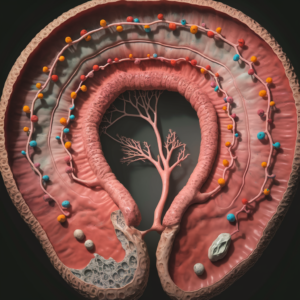Helicobacter Pylori: The Stomach’s Stealthy Invader
Understanding the World’s Most Common Gut Infection Helicobacter pylori (H. pylori) is a remarkably resilient bacterium that has colonized human stomachs for over 58,000 years, making it one of our oldest microbial companions. Today, this corkscrew-shaped pathogen infects 4.4 billion people globally—more than half the world’s population. While many coexist peacefully with this microbe, for others it …
